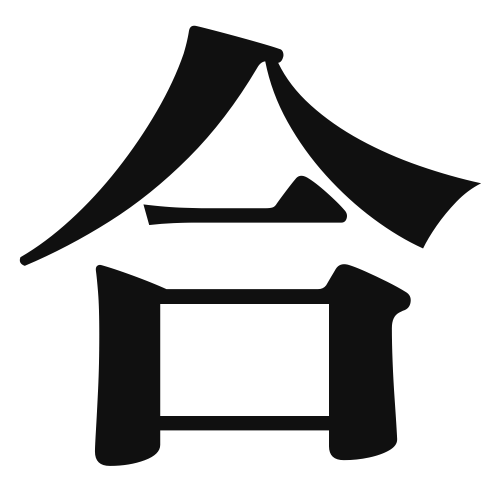1. Overview of Meaning
The kanji “合” (pronounced “ai” or “gou”) generally means “to combine,” “to fit,” or “to join.” It conveys the idea of bringing things together or achieving harmony.
2. Formation and Radical
Formation of the Kanji: The kanji “合” is a compound character, which means it is formed by combining different elements. It is classified as a compound ideograph (会意文字), representing the concept of joining or fitting together.
Radical: The radical for “合” is “亼” (which indicates a person or people), combined with “口” (meaning mouth), suggesting the idea of people coming together to communicate or unite.
3. Examples of Usage
Common Words and Phrases: Some frequently used words that include “合” are:
- 合格 (goukaku) – passing (an exam)
- 合意 (goui) – agreement
- 合唱 (gasshou) – choir
Example Sentences in Daily Conversation:
- 私たちはこのプロジェクトで合意に達しました。 (Watashitachi wa kono purojekuto de goui ni tasshimashita.) – We reached an agreement on this project.
- 彼は試験に合格しました。 (Kare wa shiken ni goukaku shimashita.) – He passed the exam.
4. Synonyms and Antonyms
Similar Kanji: A similar kanji is “結” (ketsu), which means “to tie” or “to bind.” While both kanji convey a sense of joining, “合” emphasizes fitting together, whereas “結” focuses on binding or tying things together.
Antonyms: An antonym for “合” is “分” (bun), which means “to divide” or “to separate.” This represents the opposite action of bringing things together.
5. Cultural and Historical Background
Relation to Japanese Culture: The concept of “合” is significant in Japanese culture, often associated with harmony and unity. It reflects the importance of collaboration and consensus in social interactions.
Proverbs and Idioms: One common idiom is “合うも合わないも運次第” (Aumoaawanai mo un shidai), which means “Whether things fit or not depends on luck.” This highlights the unpredictable nature of relationships and collaborations.
